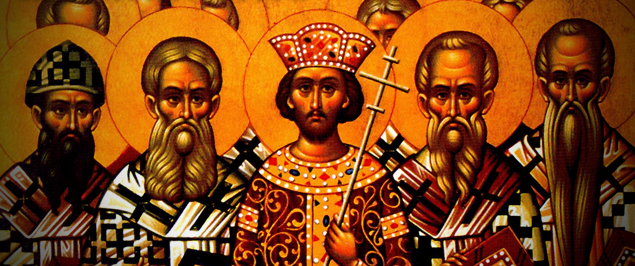Mark Jones, in a recent podcast, briefly infers that there is “built-in space” within the confessions (and thus Scriptural authority) for a reasonable response to diversity within theology that does not push one outside of the bounds of Christian orthodoxy.[1] This brief essay will seek to take Jones’ concept and argue that this “built-in space” is also true when constructing theology. The Scriptures as final authority, the ecumenical creeds of the faith (Nicaea, Chalcedon, etc.) and the later confessions of the Reformed faith (Westminster, Savoy, London Baptist, etc.), together form boundaries for the sake of doctrinal strength and consistency. As others show, this is not inconsistent with the tenet of Sola Scriptura, since the Scriptures are the final authority (and testing) of faith and practice.[2] The creeds and confessions are monuments of the battles for orthodoxy fought and won and the foundation upon which even their own heritage stands. While many have understood the creeds and confessions as immovable doctrinal orthodoxy there is a lesser-known benefit to them concerning the construction of theology. What this essay will argue is that these safeguards also provide a “sandbox” in which theological construction can take place. An example of one such concept is the discussion of lapsarian views which the confessions “allow.”[3] One can contemplate, compare, and contrast the opinions concerning the order of God’s decrees and play in this “sandbox” with great freedom without crossing any orthodox boundaries. For instance, one might consider the ramifications of the supralapsarian view on Christology as does Edwin van Driel in his book Incarnation Anyway. His proposal is not the first of its kind, rather he takes the works of others and builds his suggestion from the best of what those with whom he interacts have to offer. At no time in his efforts does he cross the boundaries of Christological orthodoxy. This example does not preclude that one who constructs a theology from the varying lapsarian views may not go outside the bounds of orthodoxy. However, if this occurs, the confessions and creeds (which find their roots in Scriptural authority) are the safeguards that expose the heresy. What this article is not arguing is the idea of supplemental confessional documentation. One need not add to the confessions as if they were deficient in some way. Carl Trueman asks whether there is a need for such addenda and answers that he would exercise a great deal of prudence in proceeding with such an experiment.[4] On the contrary, what we are arguing is that there is room in the “white-spaces” of the creeds and confessions where one is not quick to dismiss the safeguards that those documents provide.
This brings this essay to a question regarding speculative theology. If one is to play in this “sandbox” and does so being careful not to cross any creedal or confessional constraints, then there is occasion for theological speculation. Oliver Crisp helpfully “suggest[s] that a certain sort of theological speculation may be permissible provided it is theologically productive.”[5] If one is circumspect concerning the constraints of the creeds and confessions, one cannot only speculate freely, but also constructively within those constraints. Additionally, if one can agree with Crisp, one should use speculation for the betterment of theologically fruitful activity. This concept fits well with the previous thought of reasonable responses within theological diversity. If there are two parties involved in healthy theological debate with each remaining inside the bounds of orthodoxy, we can imagine a sharpening of theological ideas and amiable dialogue that does not hurl accusations when there is a divergence of opinions. The essential encouragement of this brief treatise is that pastors and theologians alike should not only feel free to expand their theological understanding through such speculation but find the creeds and confessions as the useful and safe places they are for constructing theology.
[1] Mark A. Garcia and Mark Jones, “Reformed, Not Calvinist: Recovering Reformed Distinctions and Identity,” https://www.greystoneinstitute.org/conversations/ep32. Around the thirty-minute mark Garcia and Jones converse around this idea.
[2] Jordan Steffaniak, “The God of All Creation,” JRT (2020): 358–380; Gregory Feulner, “Sola Scriptura or Nuda Scriptura,” https://ftc.co/resource-library/blog-entries/sola-scriptura-or-nuda-scriptura/. This second article is particularly helpful for those seeking to address this issue at the lay level.
[3] By “allow” I mean those views which are within the bounds of the of the Westminster and by way of association the LBC2 as well. It is conceivable that one might give thought to those which are not allowable according to the confessions and yet still remain orthodox.
[4] Carl Trueman, The Creedal Imperative, 195–196.
[5] Oliver Crisp, “Incarnation without the Fall,” JRT (2016): 216.
Author
-

Jason Alligood is the Teaching Pastor of Fellowship Bible Church in Peoria, Illinois. He holds a PhD in Systematic Theology from Midwestern Baptist Theological Seminary. He has been married to Amber since 1997 and together they have three children: Jonah, Karis, and Aubrey.
View all posts




